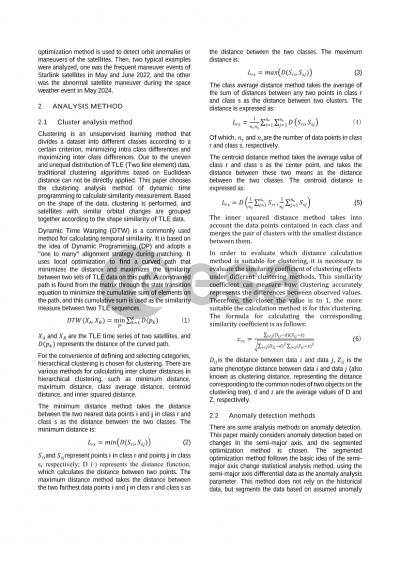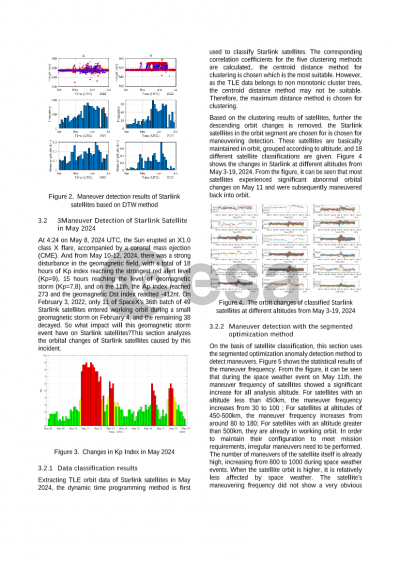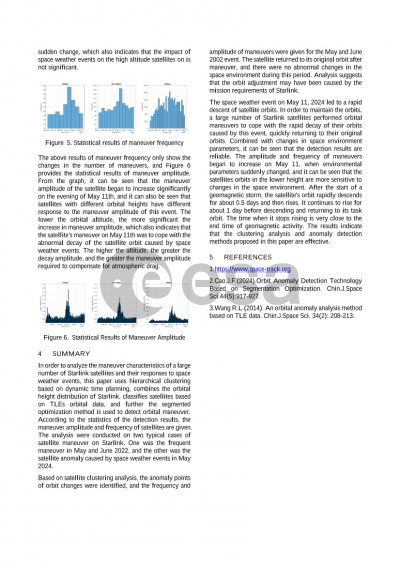Document details

Abstract
In recent years, with the deployment of mega-constellations in low Earth orbit (LEO), the collision risk of LEO satellites has rapidly increased. Constellation satellites have strong maneuver ability and require frequent maneuvers to maintain their configuration and meet mission requirements or compensate for atmospheric effects, especially in the event of extreme space weather events. Therefore, timely detection of their orbital anomalies is of great significance. By analyzing the orbital parameter changes of constellation satellites, maneuver events can be detected and identified timely.
In this paper, first the clustering analysis method is used to classify Starlink satellites, then the segmented optimization method is used to detect satellite orbit anomalies. Two typical examples were chosen, one happened in May and June 2022 during the Russo Ukrainian War, and the other happened in May 2024 during the space weather event. The results indicate that the classification and anomaly detection methods proposed in this paper are effective.
The paper analyzes these events using the orbital elements published by the United States. Firstly, the dynamic time programming (DTW) algorithm is used to cluster the orbital data of Starlink satellites, satellites are selected that have undergone maneuvers in their operation orbits, and are classified according to their orbital heights. Then the segmented optimization maneuver detection methods are used to perform maneuver detection to get the maneuver time.
The analysis results indicate that the number of maneuvers of the Starlink satellite in May and June 2022 has significantly increased compared to April 2022, with a more than fourfold increase. The reason is gotten by analysing the orbit change that Starlink satellite frequently changed its orbit to meet mission requirements.
On May 10, 2024, there was a strong disturbance in geomagnetic activity. Based on the classification of satellites and anomaly detection, analysis was conducted combined with the space weather changes before and after the maneuver. The results showed that after the geomagnetic storm, the satellite's orbit rapidly descended for about 0.5 days, and then continued to rise for about 1 day before descending and returning to the operation orbit. The time of stopping rising was very close to the end time of geomagnetic activity.
Preview







